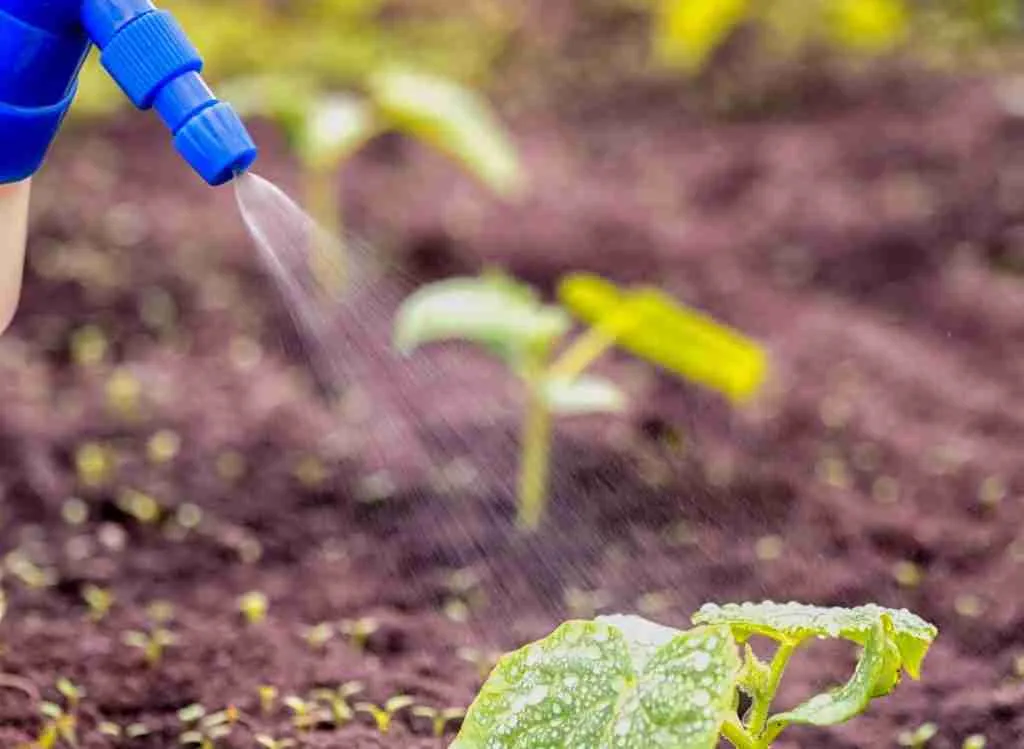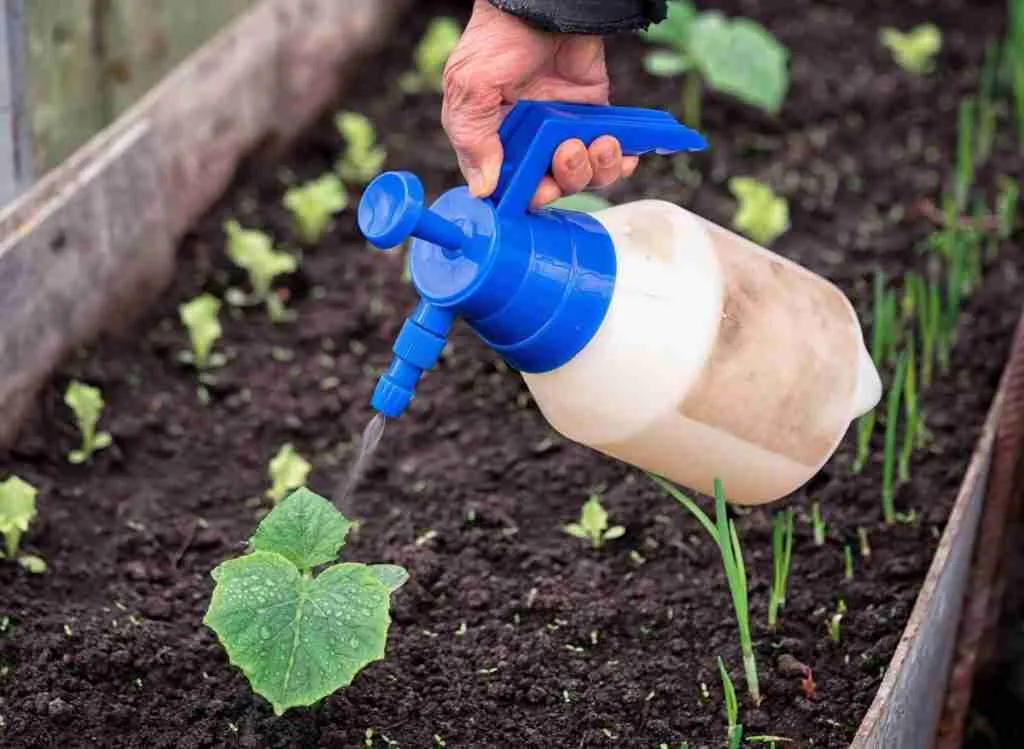
Sevin spray is one of the most used pesticides among gardeners. Its active ingredient Zeta-cypermethrin is toxic and requires extreme cautiousness when in contact with plants and humans. So, how often do you use Sevin spray on plants?
Application for Sevin spray should be limited to once every seven days when required for ornamental plants, including perennials, small trees, and shrubs. In addition, perennials and shrubs can take about six applications per year, while you apply Sevin spray for trees about four times per year.
The exact waiting period depends on the type of plants you are growing. More importantly, thoroughly wash any fruits and vegetables before you consume them.
Read on to find out how to apply Sevin spray as well as Sevin powder properly.
See also: Is Sevin Insecticide Truly Safe? Let’s unfold the truth!
How Often Do You Use Sevin Spray on Plants or Vegetables?
Sevin Spray can be used on ornamental plants after every seven days. The ornamental plants include perennials, shrubs, and small trees. Small trees need to be sprayed only four times a year. However, perennials and shrubs can require six applications per year.
How often to spray Sevin on vegetables varies from plant to plant. Depending on how often you use Sevin spray, vegetables are ready to be reapplied after every fourteen days after the previous application. It can also be eaten after fourteen days of application, but ensure you thoroughly wash them.
Ensure you apply Sevin spray when in calm weather and when there is no rain forecast for the next 24 hours to prevent the spray from washing and drifting away.
See also: How To Properly Use Epsom Salt To Kill Weeds?
How to Use Sevin Spray on Vegetables?
- Sevin or any other pesticides should only be used on plants and vegetables when needed.
- Use Sevin spray on your vegetables at the first sign of insect pests.
- Shake the product well and evenly spread the plant surfaces, upper and lower, until thoroughly wet.
- Attach a standard garden hose, and then turn on the water to the hose.
- Aim at target vegetables, and turn the control knob to “On.”
- Ensure you spray on days when the weather is calm and no rain forecast for 24 hours to prevent the spray from drifting or washing away.
- Carefully follow read the instructions for use from Garden Tech.
- Do not allow children, adults, or pets to enter the treated zone until the sprays have dried.
- Check the product label for the list of controlled pests.
- It is recommended to keep Sevin stored in its original container. The sealed container should be kept out of the reach of children and pets.
- Sevin spray is proven to be fatal for the bees, so do not spray it on plants and vegetables that are near the blooming plants.
- Ensure that you have the protective gear required to use Sevin spray. Wear waterproof gloves, a full-sleeved shirt, and long pants. Wear sneakers with socks and chemical-resistant headwear as well.
- Keep in mind that overexposure to Sevin spray can cause blurred vision, abdominal cramps, breathing problems, diarrhea, muscle tremors, and nausea. Serious health issues are also caused such as convulsions, unconsciousness, and respiratory failure.
See also: Top 5 Signs of Over Fertilization You Need To Look Out In Your Garden
What Bugs Does Sevin Spray Kill?
Insects controlled By Sevin spray
Sevin spray kills more than 500 insects. Only spray it on the infected area, and avoid killing the beneficial insects.
- Crickets
- Cutworms
- Grasshoppers
- Ground Beetles
- Hornworms
- Japanese Beetles
- Spiders
- Spittlebugs
- Springtails
- Lace Bugs
- Ladybug Beetles
- Leafhoppers
- Stink Bugs
- Tent Caterpillars
- Thrips
- Mealybugs
- Millipedes
- Mole Crickets
- Scale Insects
- Scarab Beetles
- Silverfish
- Read the label for a complete list of insects controlled by Sevin Spray

How to Use Sevin Powder on Plants?
- Use Sevin power on home garden vegetables at the first sign of unwanted insects or damage.
- Do not forget to wear protective rubber or household latex gloves when handling and applying.
- Do not add water.
- Apply on days when there is no rain forecast for the next 48 hours to prevent Sevin dust from being blown or washed away.
- Do not allow children, people, or pets to enter the area you treated until the dust has fully settled.
- Use Sevin dust outdoors only. Water before applying Sevin power in lawns,
- Avoid watering again for two days.
- Do not forget to follow the suggested pre-harvest intervals and application frequencies for vegetables and fruits.
- Read the Sevin power product label for listed pests.
- Apply Sevin power in dry seasons and on the first sign of infestation to control the damage.
- Gently shake Sevin power and evenly distribute it throughout your garden or on your plants.
- Properly coat the stem with Sevin power since this is where most of the insects will attack. However, if the leaf surfaces are damaged, then coat the top and bottom of the leaf with Sevin dust.
- Generally, flowering plants do not require Sevin dust, so do not apply them there as it may kill the pollinators such as bees. If the bees or other pollinators are killed then the crop will stay unpollinated.
- Do not apply it in the season of rainfall as then the Sevin power will be washed away. Wait for at least seven days in between the applications.
See also: Will Frost Really Hurt Your Mums? Here’s The Truth!
Can You Use Sevin Dust on Houseplants?
You can use Sevin dust on houseplants. Sevin dust is a pesticide that is used to treat plants under attack. The only condition is that you take them outside and coat them. Bring the houseplants in once they have dried out.
It should not be applied indoors as it is a toxic substance that can cause several harmful effects to both humans and animals.
Wrapping Up
According to its manufacturer, Sevin is safe and kills over 500 pests. It doesn’t harm plants, lawns, or blooms, according to Garden Tech.
However, for safety and optimal results, strictly follow the recommendations of use.


